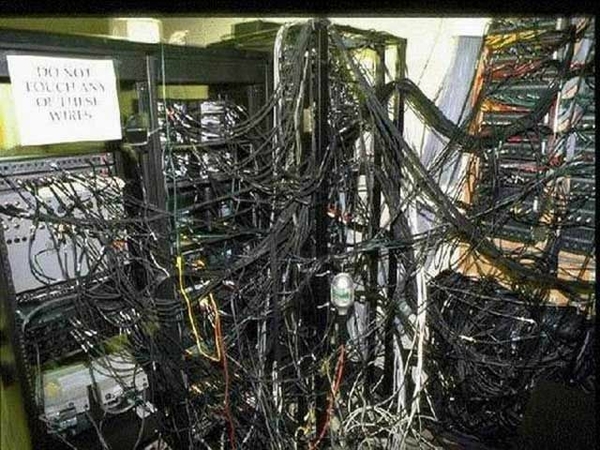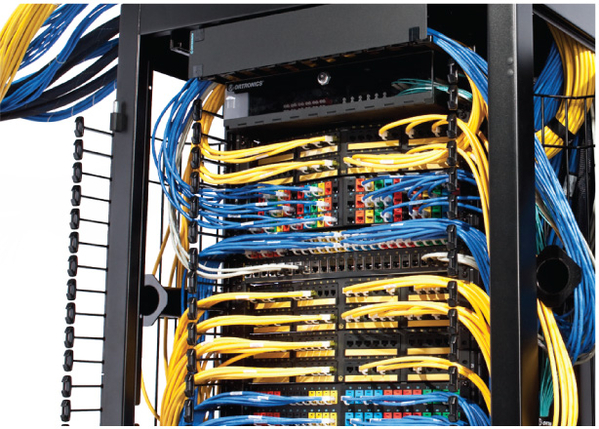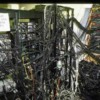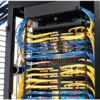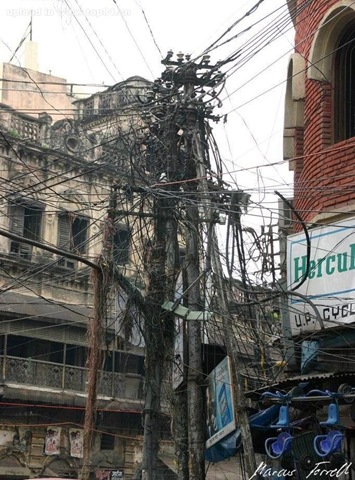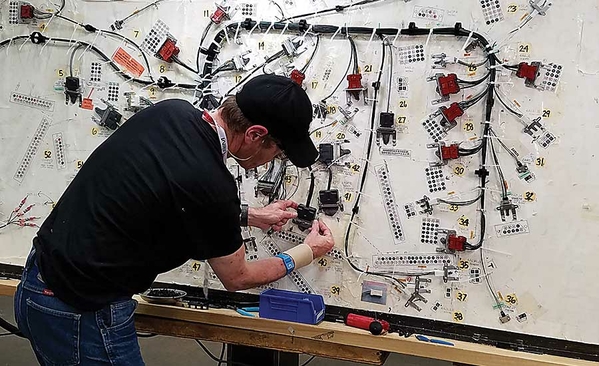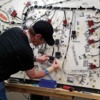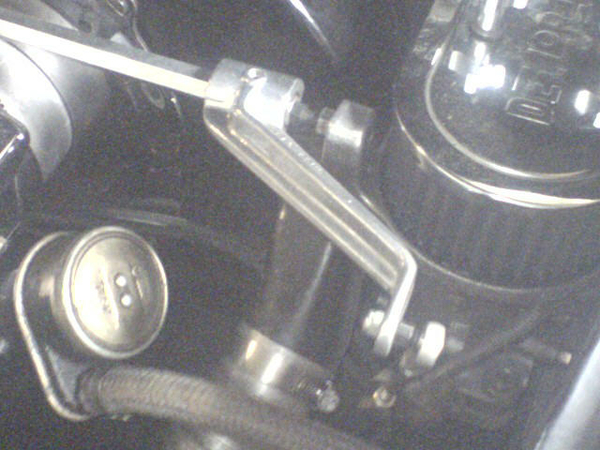So all week I've been playing with these carbs. Finally (I think!) got them dialed in today.
To recap: last Saturday a.m. I headed out to maybe show the car at an unofficial gathering nearby. I was a block from home when I aborted the mission: popping, blurby backfires, rough going told me I should once again clean some idle jets.
So I decided to install the Jet Doctors, and did that, and pulled out all the idles and mains and doused them with Gumout and blew a little air through some orifices on the carbs and splashed carb cleaner and/or gasoline on my face, as one does.
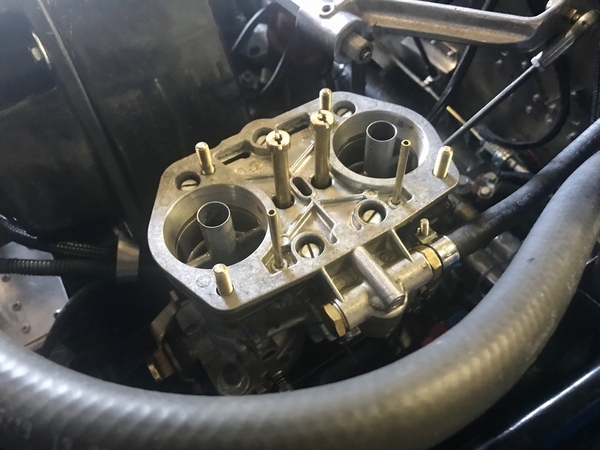
Got it back together and went to reset the mixture screws and it wouldn't set.
Noticed just a tiny bit of slop in the hex bar on the driver's side so i figured what-the-hey and cut the mount towers off the air cleaner bases, drilled and tapped and socked in a couple 5/16 heim joints, and epoxied some artfully cut down bolts in the hex bar ends. Crossed that off my punch list and returned to trying to set the carbs right.
Long story even longer: they wouldn't set. Three times I started over, warmed up the car, detached the linkage, set the mixture screws a half turn out from gently seated, set the idle stops a half turn in, checked the pull with the snail and got them even, and then went after the mixture screws for best idle.
Oh, it idled just fine. But underway I'd get those same symptoms, more or less: A bit of a stumble on takeoff. Popping on light acceleration. Popping on decel. Blurgy transition to the mains.
I mean...drivable. Almost not bad. But I know what it's supposed to act like, and this wern't it.
I pulled out the carb cleaner again...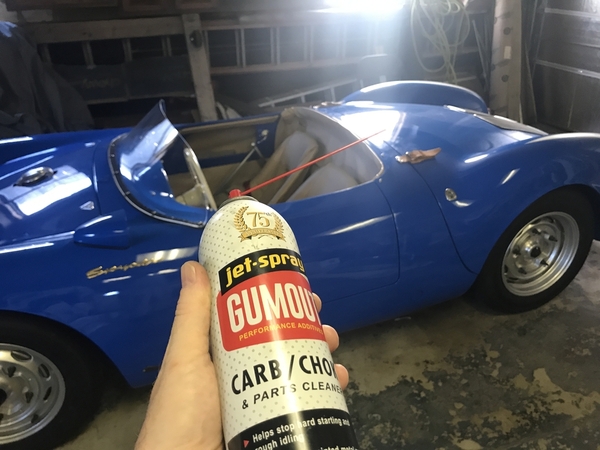
Turns out that left side carb, with the linkage attached, was not quite setting back down on the idle stops. Oh, it got mighty close! So close I didn't see it—three times.
It was less than a paper's width off the stop. I loosened the lock nuts on the down rod and turned the rod about a half turn. Tightened up. Rechecked with the snail. Went around the mixture screws again. Took a ride and finally we're back to normal.
Oh, it still needs attention. Nothing like Danny's yet.
But now we'll be working from a slop-free (slop-proof!) linkage kit as we try to get this beast the best it can be.


